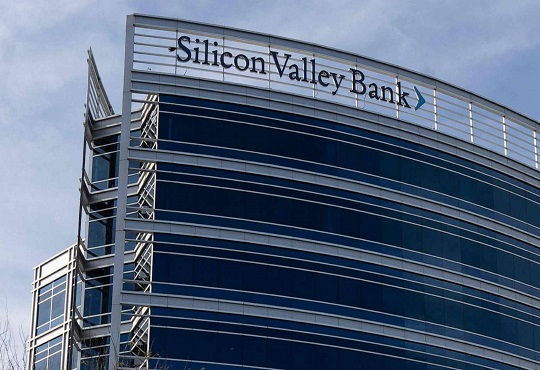How IT-driven Risk Management could have prevented SVB Fiasco
Sudhakar Singh, Editor | Sunday, 19 March 2023, 10:57 IST

After the takeover of Silicon Valley Bank by U.S. financial regulators, SVB Financial Group has petitioned for a court-supervised reorganization process under Chapter 11 bankruptcy protection, with the goal of seeking buyers for its assets. The bank’s collapse has made headlines in the recent weeks, having a reverberating effect on the market, raising fears of a wider banking crisis, and causing banking shares to tumble. Danny Moses, an investor who predicted the 2008 financial crisis, has called it a failure in terms of risk management. “It is just bad risk management. It was complete and utter bad risk management on the part of SVB,” he says.
When it comes to risk management in banking, information technology plays a critical role as banks rely heavily on IT systems and applications to manage and mitigate risks. IT systems help banks assess and analyze risks related to market conditions, counterparty behavior, creditworthiness, and operational issues. Analytics software and big data tools can used to identify potential risks and create predictive models that can help banks mitigate risk.
Let us try to understand how information technology can help in risk management in banking.
Real-time monitoring to mitigate risks
In addition, through the information technology, banks can conduct a real-time monitoring of transactions and activities. Any risk at all is tackled immediately through the process of mitigating the risk. Real-time monitoring ability of the banks enable them to identify and terminate on-time suspicious or fraudulent transactions. In the banking industry, one case of how real-time monitoring has been used to mitigate the risk is via the implementation of fraud detection systems. The real-time monitoring systems for detecting the fraud use the analysis of large volume of financial transactions that involves any kind of suspicious and fraudulent activities. These real-time monitoring enables the banks to timely respond and to avoid the fraudsters using the gaps within the banking system’s weak spots. It also reduces the financial losses while keeping the banks' reputation intact. With the help of smart monitoring systems, Banks will not only be able to stay ahead of the curve but also keep pace with the ever-changing face of the financial crimes.
Data analytics to identify areas of high risk
Technologies in information can allow banks to analyze big data and identify pockets of risk within the data sets, which in turn make it easier to spot areas of high risk or potential high-risk activities. Further, this data analysis can serve as a benchmark for the bank to evaluate the effectiveness of the risk management strategies and it can also indicate where measures need to be refined. Data analytics can be used in various ways to achieve its usefulness for banks, through credit risk assessment being one of them. Banks can assess the financial history as well as other information of a borrower indirectly to foresee the probability of default in order to avoid losses by using such measures as collateral and insurance. Predictive models may be developed using data analytics so as to measure the risk of loan default by a borrower. These models can consider all the factors like credit history, income, debt-to-income ratio, employment status and many more data points. This information enables banks to assign a certain risk level to the borrower and then proceed to the approval stage or dismiss the application.
Automated reporting to stay on top of risk management
Technology based on information helps banks to automate and so to make the reporting and so the reporting of any risk issue or concern easier. Automation of this reporting mechanism can help them to keep track of their risk management practices, ensuring that these are always compliant with regulatory requirements and best practices. To illustrate, automated reporting can be utilized in risk management of banks by automatic AML tools. AML is of paramount importance in banking and automated reporting systems are designed to detect and investigate suspected money laundering activities.
For example, JP Morgan is a company that went through it as well. The financial services company announced in 2019 that it has rolled out of a new and AI-based AML tool. It took care of the review of the complicated contracts and detected the risk of the money laundering activities attached to those contracts. JP Morgan has fastened the pace through the tool in which AML investigations which earlier used to take months are now managed in hours. Thus, the bank is able to identify and prevent risky transactions and activities at a much faster rate.
Going forward, as banking industry become digitized more, information technology for risk management will be more and more important. One of the examples is that blockchain technology can be implemented to provide an irreversible record of transactions, therefore, it is a nice solution for secure transactions in banking sector. It could aid the company in reducing fraud risks and, at the same time, make it harder for hackers to breach the system. Consequently, the future potential uses of information technology for managing the banking risks can be considered unrestrained. The use of digital banking is on the rise, and banks need to leverage IT as a tool to mitigate risks and ensure the security of their systems.
























































.jpg)
.jpg)








.jpg)

.jpg)

.jpg)
.jpg)



.jpg)


.jpg)





























.jpg)

.jpg)
.jpg)

.jpg)
.jpg)

































.jpg)

.jpg)



















.jpg)
















.jpg)












































































































